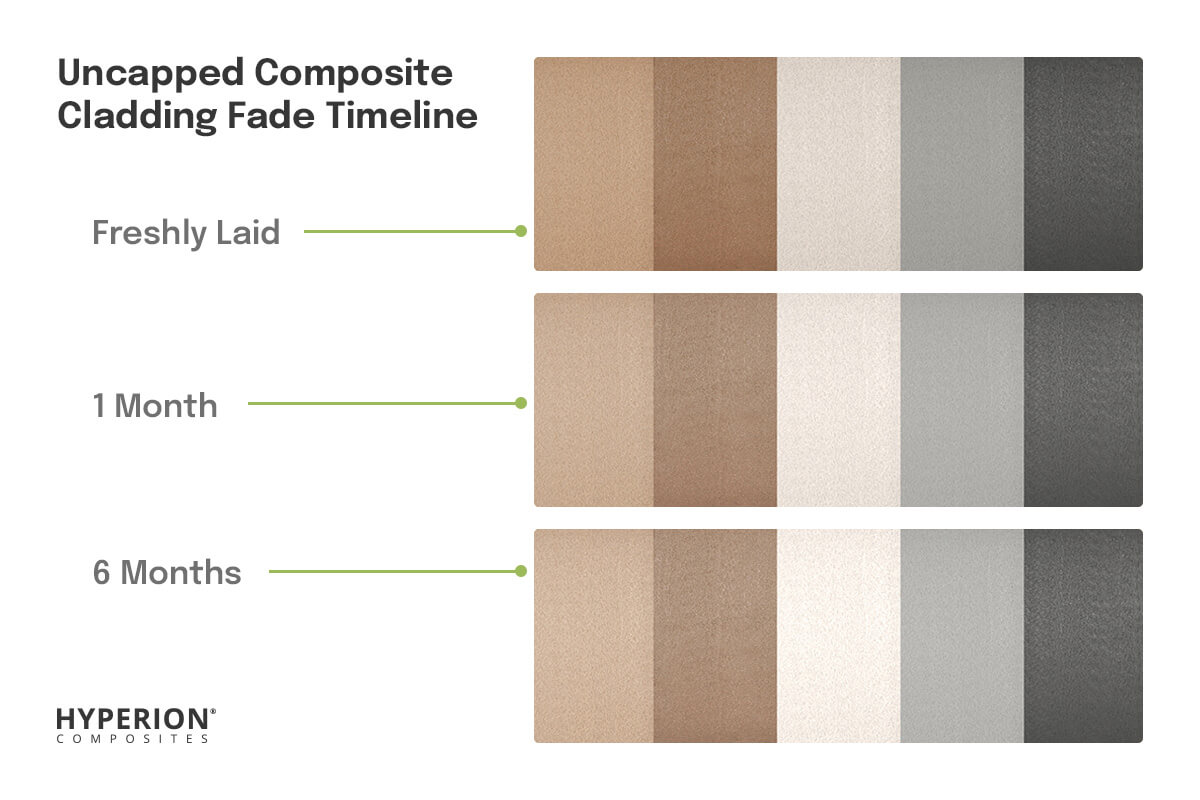Does Composite Cladding Fade?
Will Hyperion® composite cladding discolour over time
Painting and staining on traditional timber cladding typically only lasts 2 to 4 years, after which a fresh coat is required. Luckily, that isn’t the case with wood-plastic composite cladding.
With wet British summers and harsh winters the question does remain; does composite cladding have the same fading issues as their timber alternatives?
Tannins & Fading
Most composite cladding boards on the market will fade in the first 6 months of being exposed to the elements. This is a natural process and is largely due to the way composite materials are engineered.
Hyperion Pioneer and Sentinel cladding boards are no exception. When the boards are manufactured, the 60% FSC certified recycled wood and 30% recycled plastic are combined with natural wood oils called tannins. These are dark brown coloured (they contribute to tea’s colour) and ensure the boards are the same colour throughout. When the boards are exposed to the elements, particularly rain and wet weather, these will start to leach out of the boards in a process sometimes called ‘extractive bleeding’. As a result, your cladding will look slightly lighter than it did when it was originally installed.
As cladding is perpendicular to the ground, unlike decking, not as much water will sit on the boards meaning that it may take 8 to 16 weeks for the natural wood oils to wash out, slightly longer than it does for Hyperion decking. In some situations, especially if the cladding has been installed in a dry summer, the extractive bleeding process may take as long as 6 months. The colour change is greatest in the lighter colours where the tannins contribute a higher percentage of the original colouration.
To help you make an informed purchase, the below timelines show what your cladding will look like after the tannins have leached out:

What are the Watermarks on My Cladding?
When the tannins start to leach out of the boards, marks may appear on your cladding like in the pictures below. You may first notice these tannin marks after a period of rain, especially if the materials have been installed over a dry period. This is nothing to be worried about and should disappear after the boards have been wet and dried several times, for example, after the boards have been rained on a few times.

We understand that you want your home to look as good as possible, so if you'd like to speed up the process, you can wash your cladding with water and let it dry several times. Alternatively, the marks should disappear after 6 months.
UV Protection
After the natural process of extractive bleeding, the boards are subject to standard weathering, primarily from the UV rays of the sun. All Pioneer and Sentinel cladding boards contain a UV stabiliser, but will undergo some minor further fading over time. To find out more, please read Hyperion cladding’s technical specification.
If you are unsure about which colour to choose, feel free to contact our team on +44 (0) 208 088 4888 or info@envirobuild.com for expert advice.




